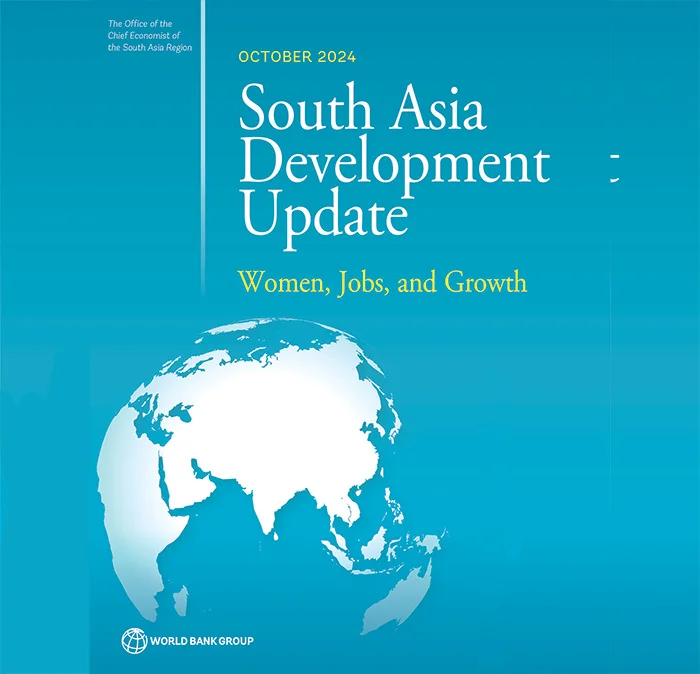News
South Asia’s geoeconomic vulnerability, trade challenges highlighted in latest WB report

The World Bank’s latest South Asia Development Update raises important questions about the region’s vulnerability to geopolitical risks and its ability to adapt to the shifting global economic landscape. As the global economy fragments along geopolitical lines, South Asian countries face complex challenges as they attempt to navigate these divisions while also positioning themselves to benefit from the reshaping of global value chains.
The report notes that many emerging market and developing economies (EMDEs), including those in South Asia, are grappling with the economic fallout of geopolitical fragmentation. As countries increasingly realign along political and economic lines, the ability of South Asia to remain resilient to external shocks, including trade disruptions and geopolitical tensions, has become a key concern.
According to the World Bank, South Asian countries’ geopolitical stances, as reflected by their voting patterns in the United Nations, generally align more closely with China than with the United States or Europe—the region’s primary export destinations and largest foreign direct investment (FDI) sources. This alignment places South Asia in a unique position as global power dynamics shift, particularly in light of growing tensions between major geopolitical players.
However, the report also emphasizes that South Asia’s relative insulation from external geopolitical risks is partly due to the region’s lack of openness to global trade and investment. South Asian countries are among the most closed economies in the EMDE group, ranking in the bottom quartile for global trade and FDI openness. While this insularity provides some protection from external shocks, it also limits the region’s capacity to leverage geopolitical diversity and capitalize on the transformation of global supply chains.
While South Asia’s economic ties are becoming more geopolitically diversified, this shift has not been fully translated into economic benefits due to the region’s restrictive trade policies. Countries like India, Pakistan, Sri Lanka, and Bhutan have expanded their export markets and FDI sources, increasing their geopolitical diversity since 2016. Despite this, the World Bank points out that these countries’ economic openness remains constrained, preventing them from fully realizing the potential advantages of their diversified international relationships.
The South Asia Development Update suggests that South Asian countries could significantly boost their economic performance if they reduced trade barriers, eased FDI restrictions, and invested in infrastructure and logistics. These steps would not only enhance trade connections but also help mitigate vulnerabilities to external shocks, whether geopolitical or economic.
To fully capitalize on their diverse geopolitical ties, the World Bank advocates for a series of policy reforms. These include lowering import tariffs, easing restrictions on foreign investment, improving infrastructure, and deepening financial markets. The report further suggests that South Asia should actively engage in a wide range of trade agreements to maintain a diverse set of trading partners and creditors, which could act as a buffer against potential geopolitical risks.
The potential gains from these reforms are substantial. According to the World Bank’s cross-country analysis, if South Asian countries were to adopt the best practices seen in high-performing EMDEs—such as improving logistics performance and reducing tariffs—there is potential for the region’s export connectedness to match that of Malaysia and Indonesia, two countries that are often cited as models of trade openness and economic integration.
The World Bank’s report underscores that while South Asia faces significant geopolitical risks, the region’s current economic policies are limiting its ability to take advantage of the evolving global trade environment. By fostering greater openness to international trade and investment, South Asian countries could better position themselves to thrive amidst the diversifying global value chains and mitigate the risks associated with geopolitical fragmentation.
For policymakers in the region, the key takeaway is clear: embracing economic openness and strengthening trade and investment ties with a broader set of global partners could unlock considerable growth potential for South Asia.
